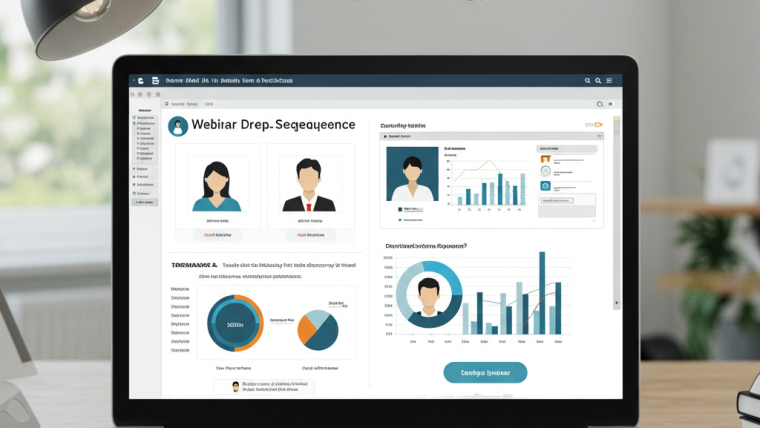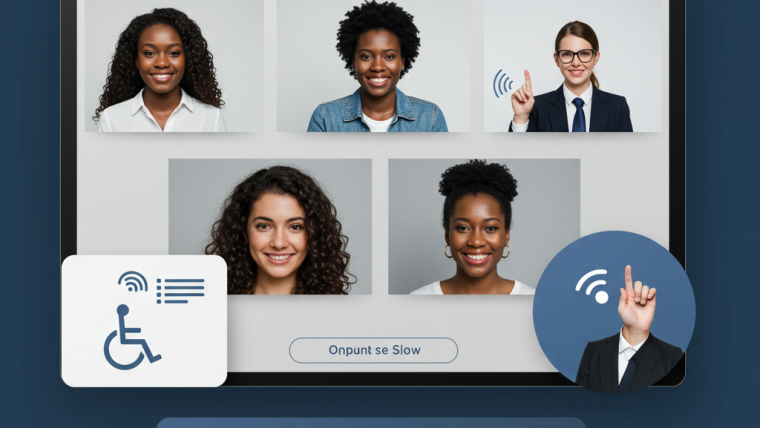Webinars have become a staple in content delivery, whether for businesses, educators, or thought leaders. To stand out, you need more than a basic PowerPoint presentation or a scripted speech. Hosting an interview-style webinar can be a game-changer for engaging your audience and establishing a memorable connection.
But how do you nail this format? It comes down to asking the right questions. Thought-provoking, strategic questions not only engage your guest but also deliver unique value to your audience. This blog post will guide you through crafting impactful questions for your next webinar. From icebreakers to audience-driven questions, we’ll ensure your session flows smoothly and keeps people tuned in until the very end.
Why Interview-Style Webinars Work
Before jumping into the questions, it’s essential to understand why this format is effective. Unlike one-sided presentations:
- They feel conversational. People feel more engaged when they’re “listening in” on a natural discussion.
- They showcase expertise. Thoughtful questions allow your guest to shine and demonstrate their knowledge.
- They offer variety. The back-and-forth dynamic keeps viewers interested.
Switching to an interview-focused format helps prevent webinars from becoming monotonous and positions your session as a must-watch.
Categories of Webinar Questions to Include
When planning your session, organize your questions into purposeful categories. Here are five types to consider:
1. Icebreaker Questions to Set the Tone
Every good webinar begins with rapport-building questions that help your guest and audience feel comfortable. This initial interaction is a chance to set the stage for what’s to come.
Examples:
- Can you share something interesting about yourself that most people don’t know?
- What’s one book, show, or podcast you’ve been hooked on recently?
- How did you first get into [topic/industry]?
- If you could describe your career in one word, what would it be, and why?
Icebreaker questions not only help you warm up your guest but also give the audience personal insight into their personality, helping with relatability.
2. Questions That Demonstrate Expertise
The main reason people attend your webinar is to gain insights from your guest’s expertise. These questions should help break down complex topics into digestible information for your audience.
Examples:
- What trends are you currently seeing in [industry] that professionals need to be mindful of?
- What’s the biggest misconception about [topic] in your view?
- Could you walk us through a decision or project where you applied [specific skill/expertise]?
- How do you manage to stay updated on [topic], and what tools would you recommend?
Position your guest as a trusted expert in their field while giving viewers practical value they can act upon.
3. Audience-Centric Questions
For an interactive webinar experience, incorporate your audience’s needs directly into your question plan. What are their pain points or curiosities?
Examples:
- Many startups struggle with [specific challenge]. What actionable advice would you offer for overcoming it?
- If someone is brand new to [topic], what’s the first thing they should focus on?
- During [specific circumstance], how can teams ensure alignment across roles?
- Are there any current mistakes you see professionals or businesses consistently making?
These examples cater directly to the audience’s concerns and emphasize that the event is tailored to them.
4. Personal Stories and Relatable Moments
People love stories. Encourage personal anecdotes and lessons learned from challenges or successes. This humanizes your guest and increases the emotional connection with your audience.
Examples:
- Can you share a specific moment in your career that shaped how you approach [topic] today?
- What’s the most unexpected challenge you’ve faced in [topic/industry], and how did you overcome it?
- Was there a turning point where everything “clicked” for you? What happened?
- Who has been the most significant mentor or inspiration in your professional life?
Stories stick with your audience longer than plain advice or facts. A well-told story can turn casual listeners into loyal followers.
5. Lightning Round Wrap-Up Questions
End your webinar with some fast-paced, “lightning” questions to keep energy high. This ensures the session ends on a fresh, engaging note.
Examples:
- What’s one piece of advice you’d tell your younger self?
- What tool, app, or habit do you swear by for productivity?
- Describe the future of [topic/industry] in three words.
- If you had a free day to do anything, what would it be?
Quick-fire questions create a memorable close and stay in your viewers’ minds as they reflect on the session.
Tips to Craft Impactful Webinar Questions
Now that you have ideas for question categories, here are some tips for crafting impactful ones:
- Research your guest thoroughly. Study their background, LinkedIn profile, past interviews, or significant projects to tailor questions.
- Keep the audience’s needs in mind. Use surveys or polls to gather pre-webinar input on what viewers want to know.
- Layer your questions. Start with broader inquiries and work towards deeper, more nuanced ones.
- Build flexibility. While having a plan is crucial, allow the conversation to flow naturally. You might uncover unexpected insights.
- Avoid yes or no questions. Aim for open-ended ones that encourage narrative answers.
Tools to Elevate Your Interview-Style Webinars
Don’t forget to equip yourself with the right tools to maximize engagement and production quality. Consider:
- Webinar platforms (Zoom, Webex, or WebinarJam): To run the live session smoothly.
- Audience engagement tools (Slido or Mentimeter): For real-time polls and questions.
- Transcription services (Rev or Otter.ai): To capture key moments accurately for post-event repurposing.
Turning Your Webinar Into Evergreen Content
Your webinar doesn’t have to end once the stream stops. Repurpose the session into blog posts, social media snippets, or even downloadable guides. For example:
- Extract quotes from your guest and turn them into shareable graphics.
- Create a highlight reel to share on YouTube or LinkedIn.
- Write a blog summarizing the key takeaways (hint – use your transcription tool for this!).
The more you repurpose, the greater ROI you’ll see on your efforts.
Start Planning Your Webinar Today
Interview-style webinars aren’t just an effective engagement tool; they’re also a way to create memorable, high-value experiences for your audience. By curating thoughtful, purposeful questions and leveraging the right tools, you can build a session that resonates long after it ends.
Looking to elevate your next webinar? Start with these question examples and adjust them to fit your needs. Whether you’re discussing industry trends, innovations, or personal journeys, crafting the right questions is the first step toward capturing your audience’s attention.








Webinar Analytics: A Complete Guide to Measuring Success and Improving Performance
The Ultimate Webinar Follow-Up Strategy to Turn Attendees into Customers
Webinar Accessibility Best Practices: How to Make Your Online Events Inclusive for All
Webinar Personalization: Tailoring Content to Audience Segments for Maximum Engagement